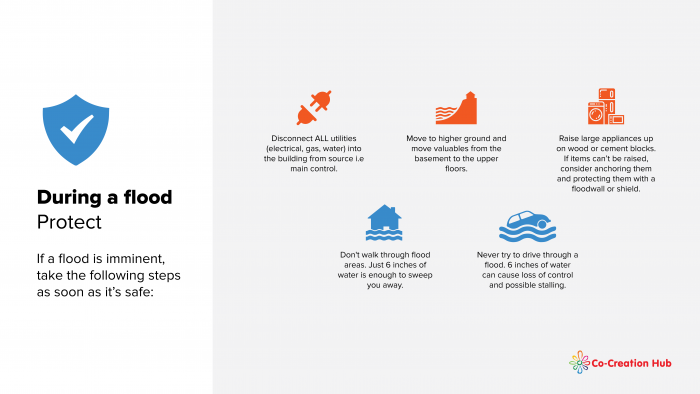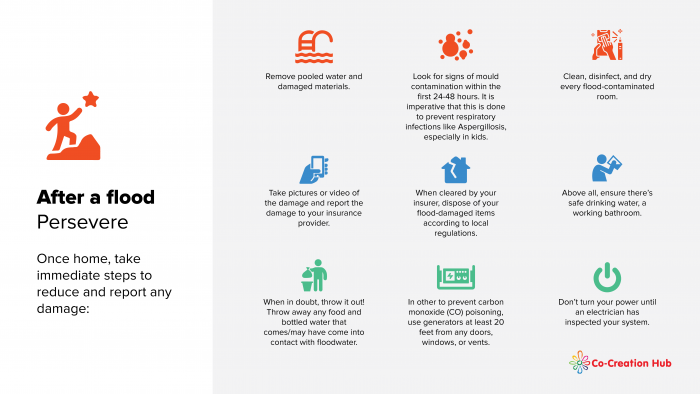Now that your home is your new office, there are a few things you should do to protect your personal and business assets from natural disasters such as flooding especially as we approach the peak of the rainy season.
What is flooding?
Flooding generally is the overflow of water that submerges land that is usually dry.
There’s an increased likelihood that floodwaters could penetrate your home if you live in a low lying area. Bear in mind, that you don’t necessarily have to live in a flood zone to be at risk for one.
Insurance
From an economic/financial standpoint, one of the first steps that can be taken is to ensure that all high-end valuables have an insurance cover in the event of a flood.
While nothing can completely prevent floods from occurring, there are steps you can take to mitigate its damaging effects.
Here are a few strategies to implement at specific times.
Before flood season: Prevent

Plan ahead and complete some simple home maintenance to reduce your risk if a flood impacts your area:
- Inventory your belongings using photos or videos. (This would be beneficial during your insurance claims)
- Create an emergency plan with a designated meeting place which is usually the highest ground in the building.
- Pack a 72-hour emergency survival kit.
- Clean drains, roof gutters, downspouts, catch basins, and gutters. Ensure there’s no blockage. (A simulation test should be carried out to ascertain this)
- Seal cracks on all walls using waterproof cement.
- Do not dispose of fats, oil, grease, or other objects in your sinks or toilets.
During a flood: Protect

If a flood is imminent, take the following steps as soon as it’s safe:
- Disconnect ALL utilities (electrical, gas, water) into the building from source i.e main control.
- Move to higher ground and move valuables from the basement to the upper floors.
- Raise large appliances up on wood or cement blocks. If items can’t be raised, consider anchoring them and protecting them with a floodwall or shield.
- Don’t walk through flood areas. Just 6 inches of water is enough to sweep you away.
- Never try to drive through a flood. 6 inches of water can cause loss of control and possible stalling.
After a flood: Persevere

Once home, take immediate steps to reduce and report any damage:
- Remove pooled water and damaged materials.
- Look for signs of mould contamination within the first 24-48 hours. It is imperative that this is done to prevent respiratory infections like Aspergillosis, especially in kids.
- Clean, disinfect, and dry every flood-contaminated room.
- Take pictures or video of the damage and report the damage to your insurance provider.
- When cleared by your insurer, dispose of your flood-damaged items according to local regulations.
- Above all, ensure there’s safe drinking water, a working bathroom.
- When in doubt, throw it out! Throw away any food and bottled water that comes/may have come into contact with floodwater.
- In other to prevent carbon monoxide (CO) poisoning, use generators at least 20 feet from any doors, windows, or vents.
- Don’t turn your power until an electrician has inspected your system.


